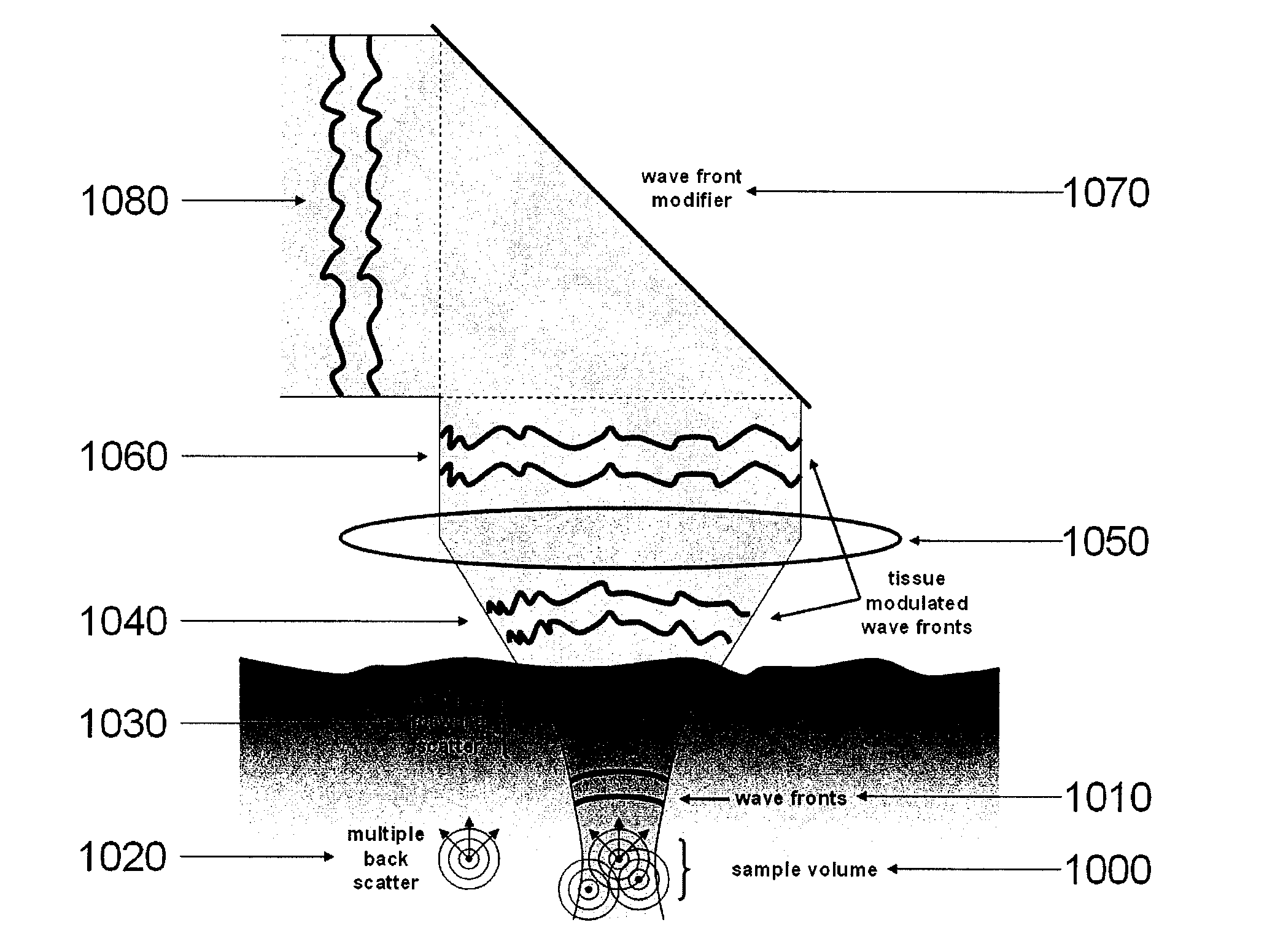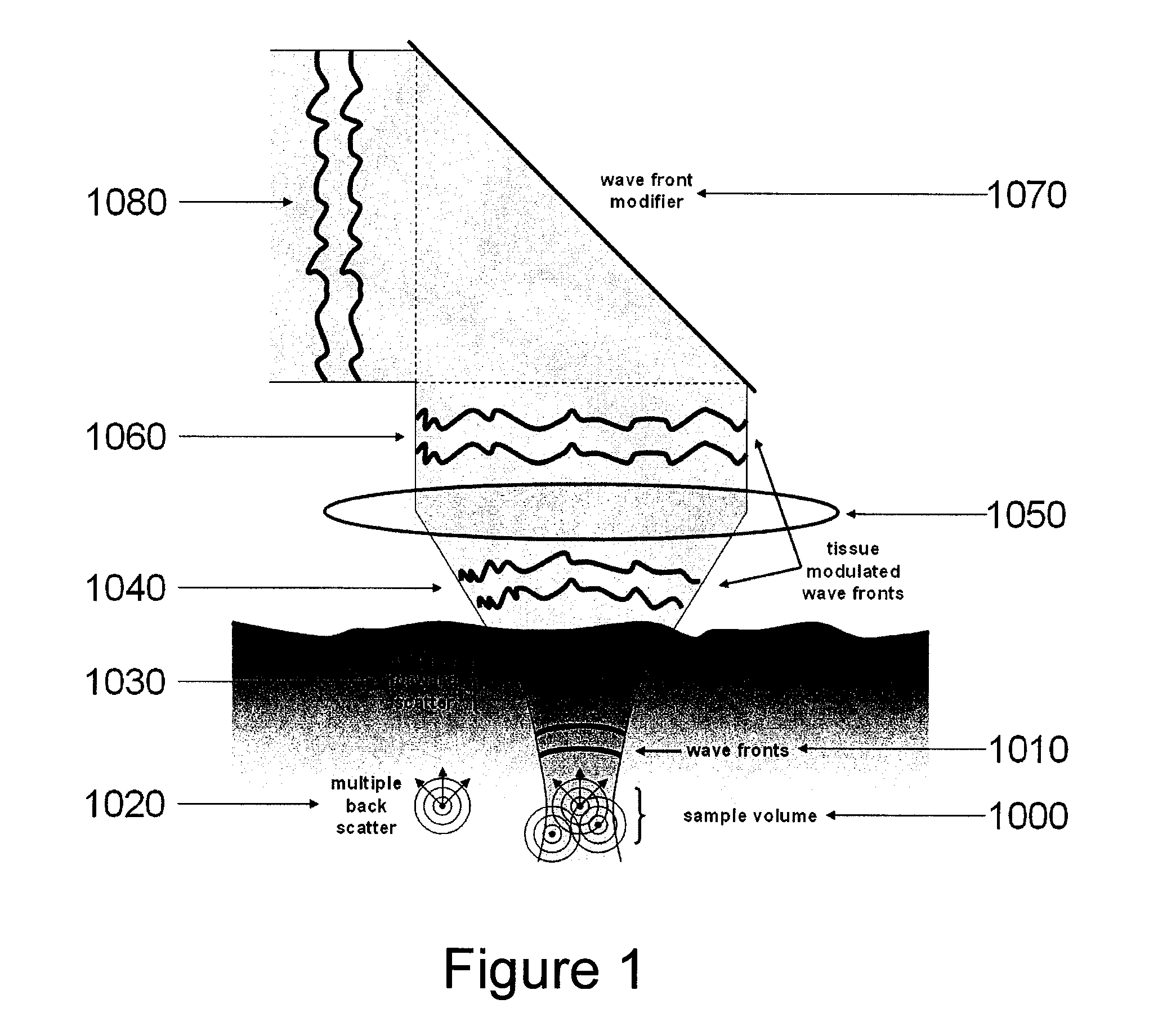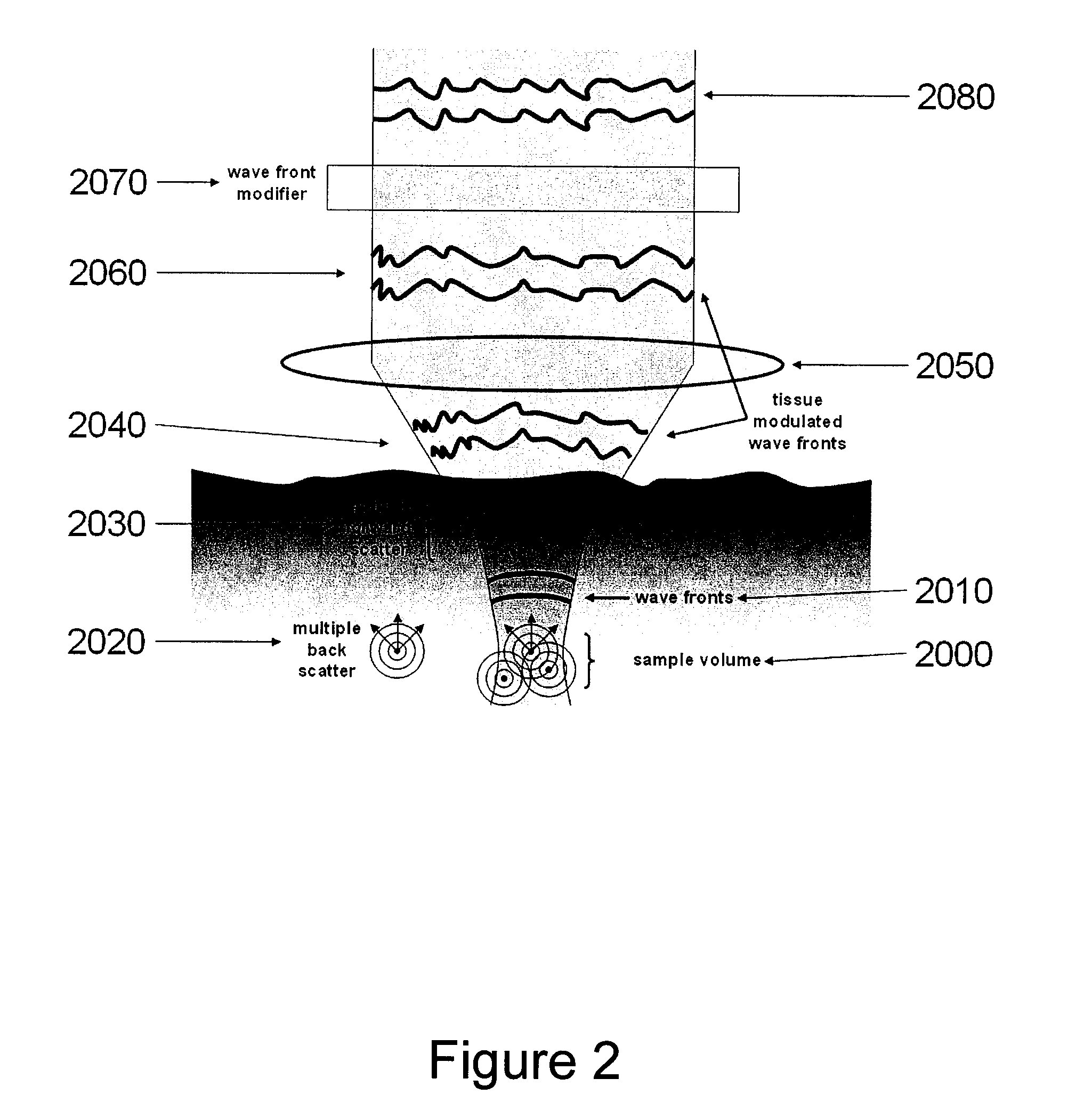System, arrangement and process for providing speckle reductions using a wave front modulation for optical coherence tomography
a wave front modulation and optical coherence tomography technology, applied in the field of optical imaging systems, arrangements and methods, can solve the problems of high correlation of patterns, low polarization properties, and low accuracy of polarization property and flow determination, so as to reduce the appearance of speckles
- Summary
- Abstract
- Description
- Claims
- Application Information
AI Technical Summary
Benefits of technology
Problems solved by technology
Method used
Image
Examples
Embodiment Construction
[0042] Exemplary embodiments of the present invention include certain modifications to the sample arm of an exemplary OCT imaging system, and may also include a device to modify the detected spatial mode of light returning from a sample (e.g., modifying the wave front of light returning from the sample). For example, a small number of measurements acquired from the same or nearby locations with different settings of the device can be averaged together in such a way to reduce speckle contrast in a single image with little loss in axial or lateral resolution. This may provide for better imaging of small, thin, or weakly reflecting structures that might otherwise be masked or difficult to resolve due to the presence of speckle. Data obtained while using the device can also be used to detect the presence of structures smaller than the focal volume.
[0043]FIG. 1 provides an illustration of an exemplary embodiment of a reflective method of a wave front modification to effect speckle reduc...
PUM
 Login to View More
Login to View More Abstract
Description
Claims
Application Information
 Login to View More
Login to View More - R&D
- Intellectual Property
- Life Sciences
- Materials
- Tech Scout
- Unparalleled Data Quality
- Higher Quality Content
- 60% Fewer Hallucinations
Browse by: Latest US Patents, China's latest patents, Technical Efficacy Thesaurus, Application Domain, Technology Topic, Popular Technical Reports.
© 2025 PatSnap. All rights reserved.Legal|Privacy policy|Modern Slavery Act Transparency Statement|Sitemap|About US| Contact US: help@patsnap.com



